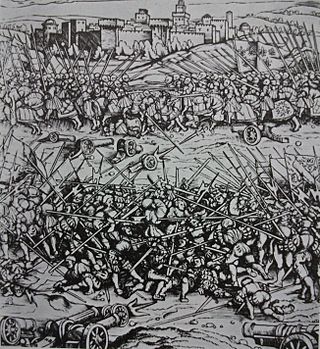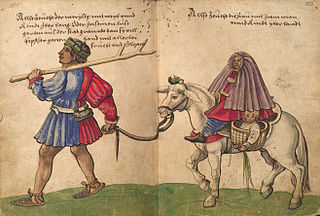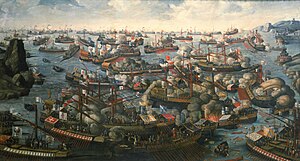
The 16th century began with the Julian year 1501 and ended with either the Julian or the Gregorian year 1600 (MDC), depending on the reckoning used.

The 1490s decade ran from January 1, 1490, to December 31, 1499.

The 1570s decade ran from January 1, 1570, to December 31, 1579.

1582 (MDLXXXII) was a common year starting on Monday in the Julian calendar, and a common year starting on Friday of the Proleptic Gregorian calendar. This year saw the beginning of the Gregorian calendar switch, when the papal bull Inter gravissimas introduced the Gregorian calendar, adopted by Spain, Portugal, the Polish–Lithuanian Commonwealth and most of present-day Italy from the start. In these countries, the year continued as normal through Thursday, October 4; the next day became Friday, October 15, like a common year starting on Friday. France followed two months later, letting Sunday, December 9 be followed by Monday, December 20. Other countries continued using the Julian calendar, switching calendars in later years, and the complete conversion to the Gregorian calendar was not entirely done until 1923.

Year 1522 (MDXXII) was a common year starting on Wednesday of the Julian calendar, the 1522nd year of the Common Era (CE) and Anno Domini (AD) designations, the 522nd year of the 2nd millennium, the 22nd year of the 16th century, and the 3rd year of the 1520s decade.
The 1460s decade ran from January 1, 1460, to December 31, 1469.

1593 (MDXCIII) was a common year starting on Friday of the Gregorian calendar and a common year starting on Monday of the Julian calendar, the 1593rd year of the Common Era (CE) and Anno Domini (AD) designations, the 593rd year of the 2nd millennium, the 93rd year of the 16th century, and the 4th year of the 1590s decade. As of the start of 1593, the Gregorian calendar was 10 days ahead of the Julian calendar, which remained in localized use until 1923.
The 1450s decade ran from January 1, 1450, to December 31, 1459.

Year 1540 (MDXL) was a leap year starting on Thursday of the Julian calendar.

The 1510s decade ran from January 1, 1510, to December 31, 1519.
The 1440s decade ran from January 1, 1440, to December 31, 1449
The 1420s decade ran from January 1, 1420, to December 31, 1429.

1578 (MDLXXVIII) was a common year starting on Wednesday in the Julian calendar.

1570 (MDLXX) was a common year starting on Sunday in the Julian calendar.

Year 1545 (MDXLV) was a common year starting on Thursday of the Julian calendar.

Year 1515 (MDXV) was a common year starting on Monday of the Julian calendar.

Year 1514 (MDXIV) was a common year starting on Sunday of the Julian calendar.

Year 1511 (MDXI) was a common year starting on Wednesday of the Julian calendar.

Year 1501 (MDI) was a common year starting on Friday in the Julian calendar.
Year 1499 (MCDXCIX) was a common year starting on Tuesday of the Julian calendar.


















